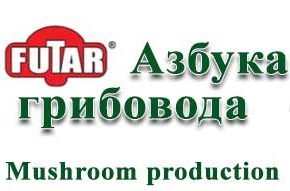Useful information for oyster mushroom growers
Useful information for oyster mushroom growers
Production of mushroom blocks:
The mycelium must be thoroughly mixed with the treated substrate. Previously, the mycelium was introduced layer by layer between the contents and the plastic film. This was argumented by the fact that the clusters grow outside through the cuts, but not inwards. Such bags were somtimes called “zebras”.
But this is actually a wrong conclusion, because mycelium is a single organism, and it takes nutrients from all over the substrate. therefore careful mixing of mycelium on the inoculation table promotes rapid and uniform blocks overgrowth and in this case pins form 1-3 days earlier.
- When inoculating the mycelium, leave a place for tying up
- In manual compaction of blocks, apply maximal efforts. Fill 1/4 of the package carefully and thoroughly compress the contents, gently hitting the bag against the floor.
- If after 5-6 days of incubation excess moisture is accumulated in the corners of the package, then corners can be cut out.
- If you comply with all the incubation conditions, after 14-16 days the substrate will be completely colonized by mycelium and it will turn into a white monolithic block.
About growing in a small (home) incubator
Microclimate for oyster mushroom incubation.
- If the block is partially infected with mold, oyster mushrooms will still fruit, but with a lower yield. It must be remembered that Trichoderma (green mold) infection and other types of mildew occur due to irregularities of substrate processing.
Mushroom cultivation:
- At all stages of mushroom block colonization and mushroom development you should maintain a certain level of humidity, temperature and ventilation, which could remove excess carbon dioxide from the growing oyster mushrooms clusters. If you do not create the conditions for the proper development of the oyster mushroom, productivity will decline substantially and so-called “diseases of oyster mushroom” will start to appear:
– mushrooms become light in weight and lighter in color,
– deformed fruiting bodies,
– dying, wilting or drying up of primordia
- Light is essential for the development of oyster mushrooms. The influence of light is so great that in complete darkness fruit bodies will not form at all, or they will form long and thin stipe without a cap. If the room has windows – this is good, because in natural light oyster mushrooms yield beautiful fruit bodies rich in color. If you grow in a basement or a room with no windows, you need to put the white light lamps (LEDs or ESLs) giving 100-150 lumens per one square meter of cultivation chamber. Usually manufacturer indicates the lumen output for lamps on the package. If the output is 1000, for example, then one lamp will be enough for 10 m2.
- Mushrooms, especially young ones, (up to 2 cm in diameter) and those growing at a low temperature (below 13 degrees) can not be watered, but it is necessary to maintain a moisture level of 85-89%.
- You need to collect mushrooms when the most of their caps will be at least 3-4 cm in diameter. Mushrooms are not cut, but teared with a little twist, in a single cluster, not dividing it into parts. As the remaining part of the cluster will not grow, it
- Home oyster mushroom cultivation techniques suggest a much lower space usage and allow to use a simplified cultivation methods with different arrangenment of ventilation, heating and humidification systems.
- In the production of oyster mushrooms on a commercial scale before starting the mushroom business it is required to prepare the project and correctly calculate the ventilation system, as well as other components of the microclimate system.
